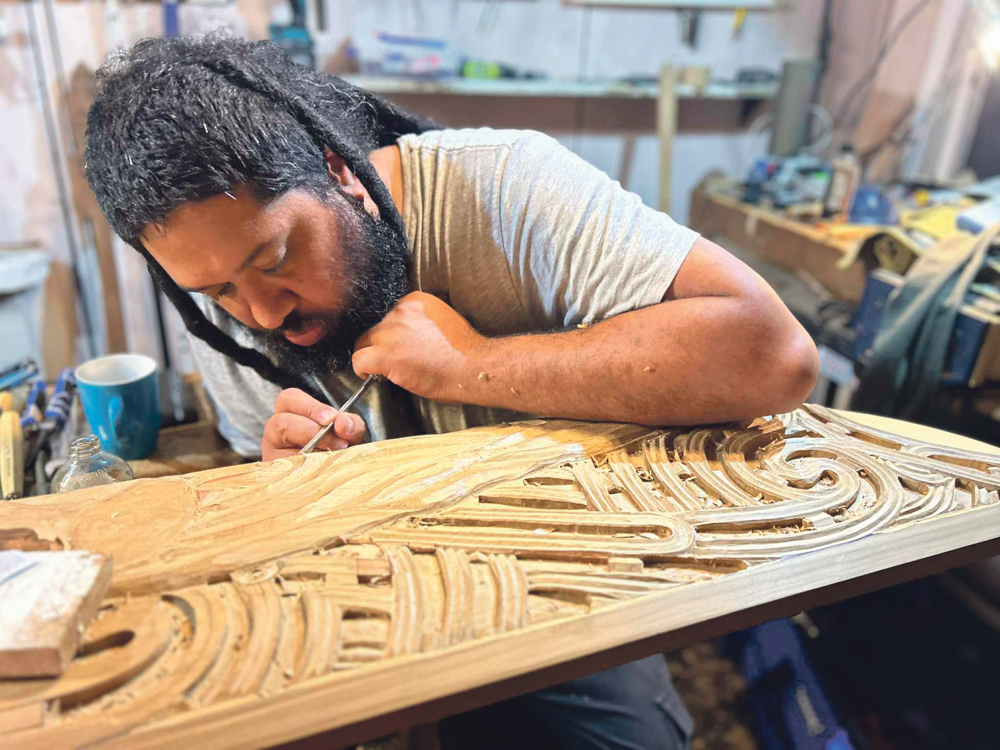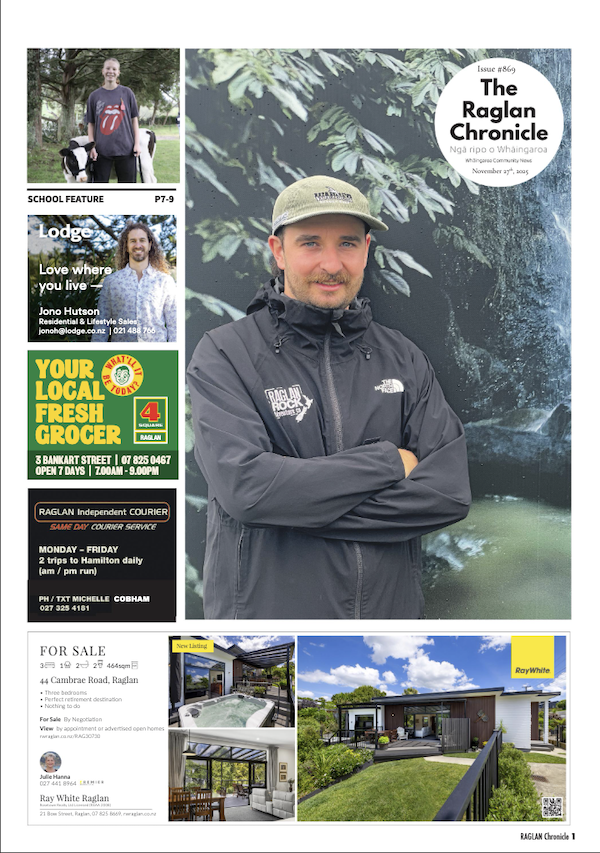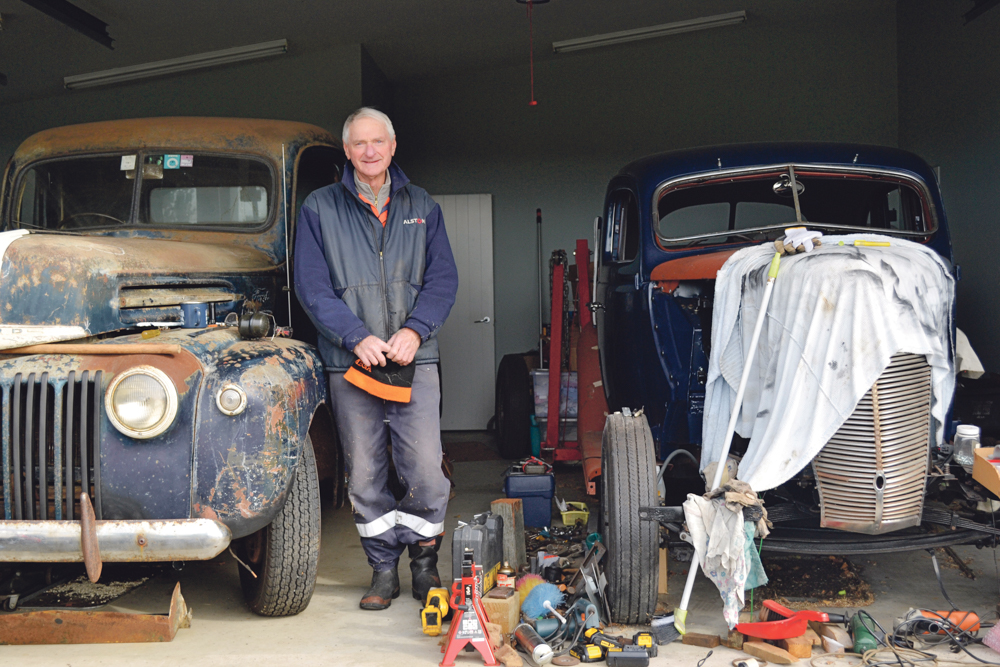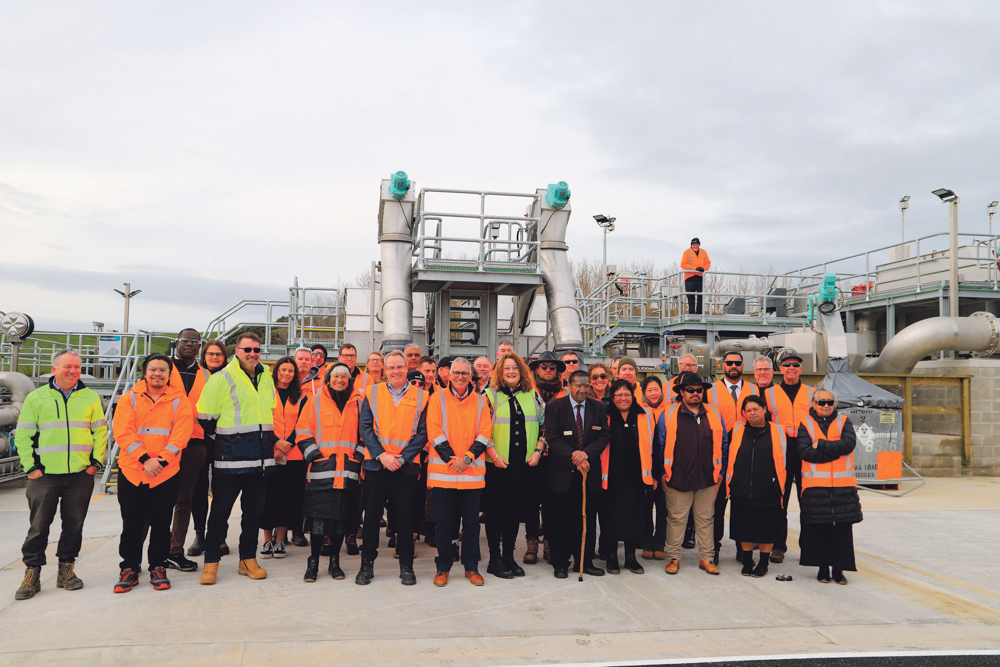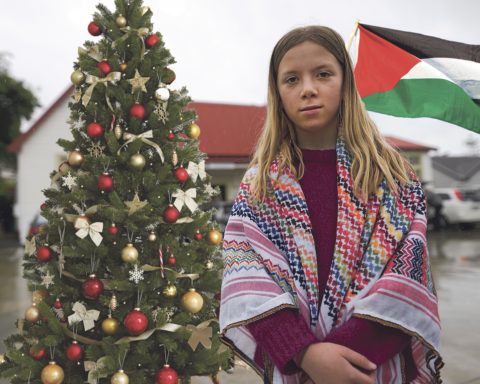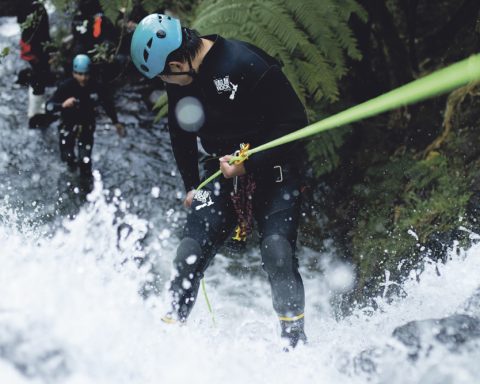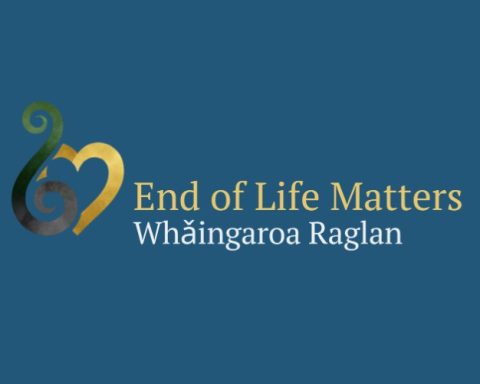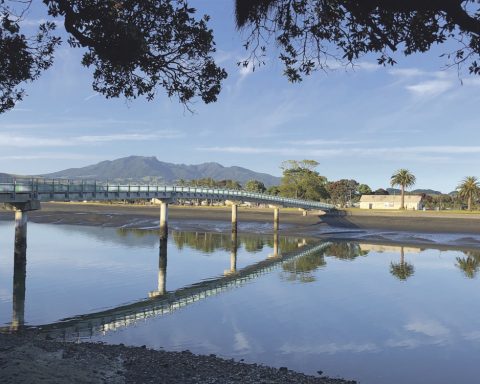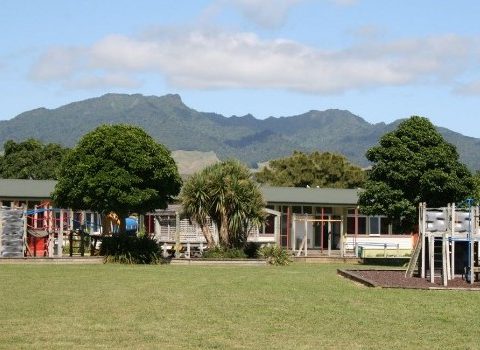When local whakairo artists Tare Kereopa and Raj Irving first heard Karioi was a theme of the 2025 Matariki ki Whaingaroa art exhibition they were inspired to jointly create a piece for the exhibition.
Taking inspiration from Tare’s older brother Aaron, a fine art surfboard sculptor whose work has included different representations of Karioi, their 2.7m x 3.0m exhibition piece depicts Karioi as seen through their eyes and expressed through their hands. An expression of who they are, their artist statement talks about how their work, simply titled Karioi, “stands not only as a celebration of ancestral echoes and natural beauty but also as an invitation to momentarily pause and contemplate the transient and ephemeral nature of our shared journey”. A continual process of conceptualising and creating, Karioi took Tare and Raj about six weeks to complete, including a few very late nights as the exhibition opening neared.
Raj reflects on how renowned artist Tā Derek Lardelli has always talked about the importance of honouring our mothers as the first carvers. This kōrero resonates with how Tare and Raj feel about living under the korowai of Karioi. Whilst recognising the different pūrākau which exist, for them, Karioi has always been a wahine; feminine, caring, motherly and warm. It was those elements Tare and Raj wished to bring to the fore in their carving.
Whether its viewing the contours of Karioi from afar or living on the maunga as Tare does, both are very aware of how Karioi sets the daily mood for all in Whaingaroa.
“The weather swings around her. The waves wrap around her. She flows into the harbour. She flows over the hills”, says Raj.
When thinking about their carving Raj describes how they, “started to think about how much influence Karioi has. You don’t just interact with Karioi when you climb the maunga. We are all interacting with her all the time. All of us who love interacting with every part of Whaingaroa, all of it has to do with Karioi. Whether it’s her flowing hair or how her body wraps around – we are all part of that”.
Recognising that Karioi has been standing long before any of us, Tare and Raj were curious, asking ‘what would Karioi be thinking’? What would her perspective be? In responding to those questions, Tare and Raj see Karioi as a mother who has remained, and who, by showing her love to everybody, connects the stories of all those in Whaingaroa and around the maunga. Even those who visit for just a short time are influenced by her.
It is these thoughts and feelings which have resulted in Tare and Raj’s multi-layered and intricately detailed whakairo.
Tare and Raj acknowledge that the majority of whakairo is male oriented. Carving a female figure which depicted the flowing femininity and beauty of Karioi was a challenge. The ongoing kōrero and wānanga among fellow carvers often went full circle, landing them back at their starting point. For Tare, “a real depth of pūkenga was gathered as part of that process, particularly in relation to the carving of her face”.
Inspired by the evocative nature of Van Goghs ‘Starry Night’ painting, Karioi portrays a deep dream-like state with flowing hair and sweeping curves of her body. Details such as the slant of her eyes point to her being tūrehu-like; both maunga and a tipuna, she sees things not every ordinary person can.
Haehae pākati, an ancient whakairo pattern, is used to represent multiple elements in the carving. On the body of Karioi haehae pākati are like a korowai, reflecting the mist which rolls over and down the maunga. Acknowledging the teachings of local carver, Kawharu Greensill, the haehae pākati signifies grief and laceration, not only in relation to the carving up of land, but also the grief held by the loved ones of those who have lost their lives on the maunga. Reflecting Tare’s time as a possum trapper, the haehae pākati are a metaphor for the traplines and the streams which cross the contours of the maunga. And the notches of haehae pākati also represent the whakapapa of whānau from around the maunga, and the different elements of time.
As Raj says, “there are many layers of meaning within those lines”.
Designed as a representation of other realms, the textured background includes the takarangi design which emphasises the in-between space and the crossing of veils. The texture is also used to represent the different types of sky against which the silhouette of Karioi stands – whether its sunsets, the purapurawhetū that shine or the winds that blow. A hononga to waka and migration; the spiral patterning of the takarangi comes from the taurapa of a waka.
Tare refers to another hononga that comes from waka pūrākau, describing how the ‘crossing of veils’ references te rerenga wairua, the pathway taken by spirits as they travel from Karioi out to Karewa. From Karewa the spirits are collected by Te Waka o Rangi. It is the star cluster of Matariki which form the eyes of Te Waka o Rangi. Te Waka o Rangi travels the night sky during the year gathering those who have passed, until the waka is ready for the final journey as Matariki sets.
The feather plumes tethered to each end of Karioi are not only a hononga to navigation and migration mātauranga – feathers were used on waka to tell wind and current direction – they also play a deliberate role in the aesthetics of the carving. Tare and Raj acknowledge Karioi is a ‘heavy’ piece. Not in terms of weight, although she certainly does weigh a lot, but in terms of the volume of carving she carries.
For Raj, “That’s our job as carvers. Not everything has to be liked and easy on the eye. It’s busy for a reason too, because there are layers of kōrero in it”.
However, elements such as the delicateness of the feathers draw attention away the heaviness of the whakairo, allowing your eyes to take a break from the detailed carving and rest a while on the edges.
The specific rākau used for Karioi connects to her story. Carved from an estimated 4000-year-old swamp kauri from Rāhui Pōkeka, the use of kauri is a mihi to mātauranga Māori which saw taonga deliberately stored in swamps, where due to the lack of oxygen they would be preserved. Like Karioi, kauri has literally been part of whenua for thousands of years. In recalling his time running possum traplines on the maunga, Tare remembers the ancient rākau, both those that had eluded the early mills and still stood, as well as those that had fallen and were in the process of returning to the whenua, He often wonders what the landscape might look like if those mighty rākau still populated the ngahere.
For Tare, Karioi encapsulates all that we know, “There is so much about her. With the moana you have to mention Karioi. With the harbour you have to mention her. The kōhanga reo of manu, you have to mention her. You can go to her for healing. For different wānanga, rongoā, and kai. You can connect whakapapa back to your marae through all her streams. She is just there. She is the pou of Whaingaroa”.
Tare and Raj have kindly agreed to exhibit Karioi again at the premiere and community screenings of Tirohia Karioi – a locally made documentary telling stories of people and their connection to Karioi being shown on the first weekend of September at the Stewart St Hall.
by Michelle Levy
